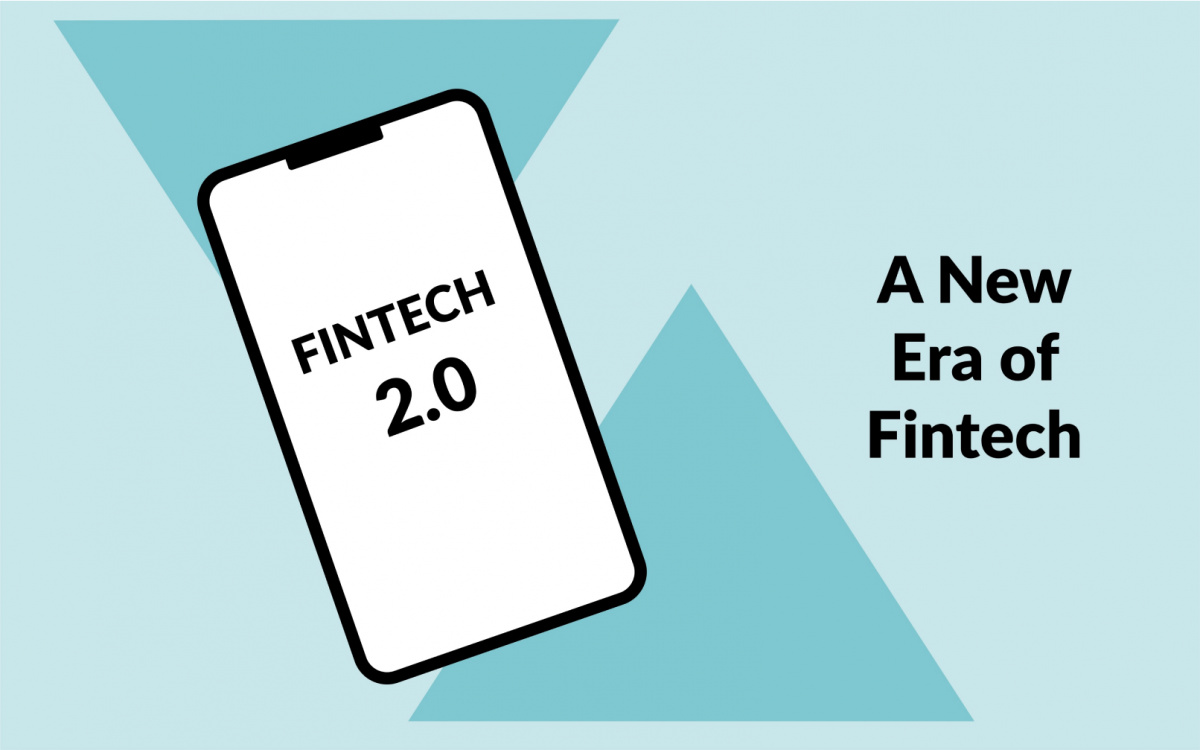Fintech 2.0: A New Era of Fintech

- Sabrina Akramova, Editor & Content Manager at Financial IT
- 04.02.2022 11:00 am #fintech #banking #bnpl #payment

As coronavirus infection spread all over the world, the fintech sector experienced a tremendous change due to abrupt shifts in customer needs. Although financial technologies were still developing and maturing, the chances of their success were increasingly low. The main reason behind it is a fragmented customer experience with too many fintech applications competing for the user's valuable attention.
The Ultimate Goal of Fintech 2.0
How Fintech 1.0 and 2.0 are different? Even if the fintech companies are gradually capturing the growing market, there has been an insignificant effect on the banking system overall. This phase is called Fintech 1.0, which is characterized by the launch of numerous neobanks, access to open banking, and contactless payment systems. Yet the emergence of innovative technologies, shifts in policy and regulations regarding open data and integrated APIs, and the need to cut costs are becoming the key for the emergence of Fintech 2.0.
The Fintech 2.0 strategy mainly focuses on “rebundling”: merging apps and digital services into a single innovative platform to manage customers’ finances, which is cost-efficient, effective, and time-consuming. Imagine a single integrated application with all the necessary tools and options available, including contactless payment, BNPL (Buy Now Pay Later), immediate conversion, checking out the balance, and other important items for customer financial well-being.
What are the market drivers? Regulations. Every innovation is believed to be a result of numerous obstacles and burdens within every industry, and the financial sector is not an exception. The biggest barrier to bank investments is regulation, which still remains a protector for existing banks. It has created an unequal playing field that needs varying degrees of financial and legal commitments from incumbents and new market entrants. However, fintechs and huge digital marketplaces are now unrestricted in their use of client data, allowing them to build more targeted services and solutions.
Nonetheless, certain regulations have indirectly improved conditions for innovation. SEPA (Single Euro Payment Area), for instance, has pushed technology improvements and fostered additional areas of divergence between bank services. But such benefits are rare.
Culture and infrastructure. The post-crisis cultural mentality also hinders in-house bank innovation. Risk appetites are down, and that's understandable. Margin erosion has prompted many banks to operate defensively, leading to greater retrenchment and aversion to non-core activity or unconventional ventures. While new technology has shortened product development cycles, banks have failed to accelerate new product launches. The technical abilities are still there, but the tolerance for failure — an essential element for creativity and invention – is lacking.
Fintechs, on the other hand, have thrived in an atmosphere free of bank regulation and expensive legacy infrastructure. However, there are risks and regulations to consider, such as e-money and banking licenses. Regulators can choose between nations and regions based on their commercial and innovation-friendly policies. In addition to policy differences, the venture capital climate is a decisive element in the development of huge digital markets.
Main Goal. While the term 'FinTech' is commonly used to refer to 'items and organizations that leverage newly created digital and online technology in the banking and financial services industries,1 we feel that FinTech has grown to play a far more strategic and targeted role. FinTech's broader purpose is to address the unmet financial requirements of sectors of the public that are not traditionally targeted by traditional financial services models. As a result, FinTech aspires to contribute to the broader objective of financial inclusion.
The ultimate goal of FinTech 2.0 is to guarantee that FinTech has a major influence on the country's gross domestic product (GDP) through the establishment of a sustainable ecosystem.
What Companies Need for Fintech 2.0 Success?
Collaboration is the key. Undoubtedly, banks and fintech companies have their own advantages and disadvantages. In order to make themselves stronger and adaptable to rapid changes in the modern market, they need to cooperate rather than compete. While some fintech startups are striving to become “Unicorns” (with a $1 billion valuations), there is a belief in Fintech 2.0 to become a far broader and diversified opportunity to upgrade the global financial service industry with 300 banks on the top. The revenue pool of these banks is worth about $3.8 trillion, which significantly exceeds the market valuations of Unicorns.
The need for fintechs to establish immediate partnerships can be explained by a lack of payment-market experience. Bringing together the core competencies of both parties allows the executives to offer cutting-edge risk-free digital services, to create a stronger value proposition.
The introduction of increasingly simplified applications with diversified tools and services may seem scary, especially for the executives of banks. The concerns about possible disruptions of the banking market are not fully justified – Fintech 2.0 brings more opportunities rather than challenges. There are some banks in the UK that have already decided to take part in collaboration by supporting such startups as Citi, Santander, UBS, BBVA, Barclays, and NAB. Moreover, in 2017 there were already 205 incubators, 163 accelerators, 11 pre-accelerators, 7 virtual accelerators, and 4 virtual incubators in the UK, some of which are financed and empowered by banks.
For instance, The Royal Bank and Lloyds bank formed partnerships and opened incubation/acceleration centers to support UK entrepreneurs and project managers and help them bring the product or service to the next level. Such programs help startups receive additional funding, expand their presence outside the UK and collaborate with these banks, thus easily gaining respect and consumers’ trust.
Focusing on core competencies. Of course, banks and fintechs have distinct benefits and disadvantages that must be discovered and blended to fulfill shifting client expectations. A partnership should allow both parties to focus on their key capabilities and contribute them to the innovation process. Fintechs have the talents, mentality, and regulatory freedom to innovate, use Big Data, and adapt quickly to market developments. The fintech business also adds technological skills – from internet lingo, consumer behavior, and contemporary web and smart-device technologies to algorithm-based data analysis tools and the interaction of installed hardware and software.
Banks, on the other hand, contribute experience and infrastructure. Along with financial expertise, banks excel in clearing, settlement, straight-through processing, liquidity, and FX activities. Banks already have the required licenses in place and are well-positioned to handle the risk of a new business.
Last thoughts
Fintech innovation is a perpetual force. It will continue to revolutionize how we communicate and do business, not least since we are only just beginning to see new advances in its B2B use. Players seeking to maintain market share must devise a strategy for keeping competitive, while also controlling market risk.
Fintechs, particularly large digital ecosystems, has sprung onto the scene. To sustain their position, they must fulfill regulatory, investment, and risk requirements while focusing on their core skills. Partnering with a global financial provider may be the best smart strategy, and many future innovations will likely occur inside such partnerships. Several market giants have realized the value of bank relationships.
Banks, on the other hand, will be under increased pressure to innovate, therefore it must become part of their DNA. Client-centricity is the holy grail of digitalization, and innovation will create new chances for client-centric solutions. In this new era of digitization, company models, consumer behavior, and conventional trade and treasury operations will all change. But by combining their capabilities and generating synergies, forward-looking fintechs and banks can lead the digital age development.




















